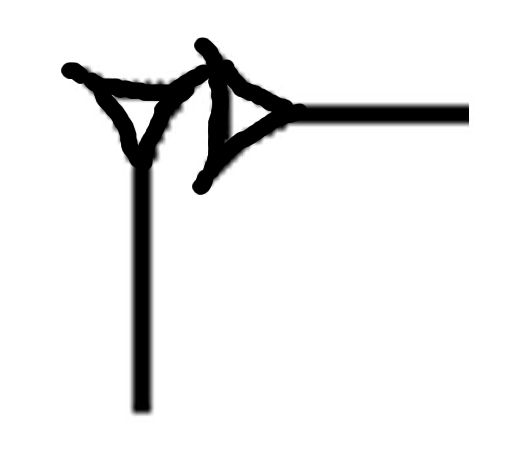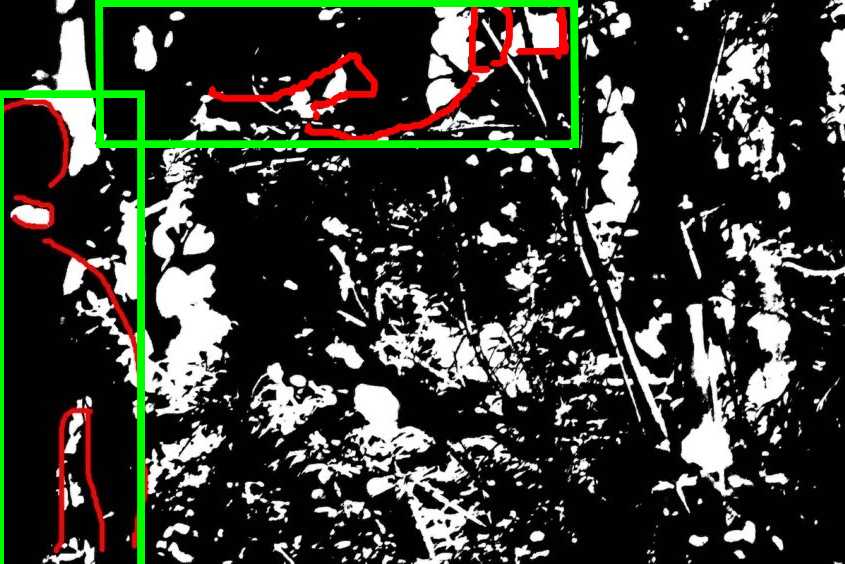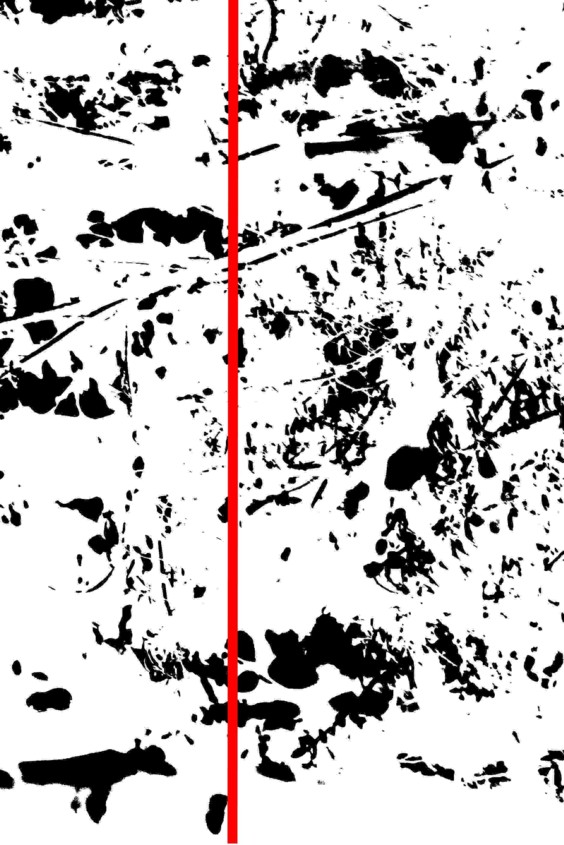
Cueniform sign LAL

The photo #9

negated, 90 degrees
Cuneiform exemplified in Ablikhos and Dickinson
John Bjarne Grover
In the two recent articles Ablikhos, Yeats and thresholding and the following Another six examples from Ablikhos' poetry I show how the work of the greek poet Mikelis Mikelis Ablikhos (1845-1917) can be seen to have a very interesting and relevant interpretation in my 23 photos which I took in a grove on the Danube Island in 2012. There could also be reasons to recognize in this an explanatory format for the 21 august 1879 apparition of Knock in Ireland (from this source): The distance between 2012 and 1879 is 133 years - that is 133 * 0,366 = 48,678 = poem #49 in my PEB - more specifically, it is 0,678 into it - which is about half way into line 10 - the "stainless ring: Library Zhikorsky Mourner". But this is just the helicopter for the timid cat of photo #1 - and it could be the 'stainless ring' (conch shaped) in the centre of photo #9 - seen by the man 'hidden at the corner', in black jacket and white collar.
In the following article Emily Dickinson and my TEQ, I showed that there is a very close parallelism between the work of Dickinson and my TEQ. Would it be that I had read Dickinson (I had read many of her poems in the mid 1980's) and 'subconsciously copied' from her work? For once, I had not read that many of her poems but enough to understand her project, secondly the enumerations are in both cases (her poems and mine) made after the works were completed and could be made in various ways. Thirdly, and most importantly, the relation between the two works is not one of causality but rather one of a meeting in the poetic elysium - which is the explanation I adopt: It is possible to see my poems TEQ 1-1719 as being in some parallel to her poems 1-1719 (by Johnson's enumeration) - and the remaining 1720-1775 of her poems could then be seen to be concerned with just the character of this enigma of her poems relative to mine. Her poem #1721 goes:
He was my host - he was my guest,
I never to this day
if I invited him could tell,
or he invited me.
So infinite our intercourse,
so intimate indeed,
analysis as capsule seemed
to keeper of the seed.
See also Dickinson #1720 - the first after the last of my 1719 poems.
This is the transcendent relation between Dickinson's poetry and mine - that is when it is arbitrary.
There is a 'capsule' hidden in the mirror-symmetric U-curve of my 'Treblinka' photo - see also this brief observation where it is found inside one of the two lower extensions of the egyptian hieroglyph.
The 'Treblinka' photo which I took in Vilnius after a stormy night which downed a tree outside the house seems to be of a mysterious 'archetypal' kind which cannot be explained by ordinary causalities - but probably result from an extraordinary interplay of the elements of the innate human semiotic constitution - see also the introductory observations to this study - the 'magic images'.
This phenomenon is what I call 'arbitrarity' and there is a relation between elements - recognized as parts of the historic relation - that derive not from ordinary causal relations but from a higher metaphysical condition - such as this poetic elysium wherein the correlations of the poetry of Dickinson and mine find their explanatory format.
The study of Ablikhos' poems relative to my 23 photos is the proof that such an extraordinary non-causal connection exists from his poetry to my photos. If it had been possible that the 23 photos were consciously guided by the photographer's attention, one could have made claims that my photos had their form because I had read Ablikhos - but, for once, the photos are completely arbitrary and out of the photographer's conscious control, secondly I had not read Ablikhos at all when I took the photos. However, the relation between the two works (his poems and my photos) can be considered related by some metric - which, then, would be beyond the control of historic causality. If computation theory is supposed to transgress the Turing boundary, it would have to be via that sort of - clearly empirically verifiable - transcendent interrelations. Of course it is possible that the 'poetic elysium' also can be seen to be some computational format whereby Dickinson and Ablikhos are the lefthand parentheses of what my work is the righthand parentheses for.
It is my idea that Emily Dickinson's poetry relate to mine in a similar fashion as Ablikhos to my photos. Ideas that the relation should be controlled by her name qua 'email i diktene sine' ('email in her poems') and mine ('ronkr over' = 'masturbates over') - see and Dickinson #1722 - are probably a little farfetched - but can perhaps be taken to be illustrative of the idea that the information could have gone the other way, so to speak - from my 1997-2008 poems to her 19th century poems: That she has been reading my later poems as her poetic inspiration via the poetic elysium. The 'arbitrarity' means perhaps something like that - and this could also be seen as an explanation to Ablikhos' poems relative to my photos. But clearly this is not ordinary causality.
See also this translation of mine from Shijing #145 relative to the cover to my "The Endmorgan Quartet". Had even the ancient chinese seen my 2008 book in their crystal bowl? If such ideas should be considered seriously, it would of course be about a shared and innately conditioned 'archetypal' level of some kind - such as this poetic elysium.
It is probable that this could be a level of knowledge which the cuneiform script encoded.
I refer to the chapter on pages 1261-1277 in my volume 4. More specifically, there is on pages 1269-1270 a discussion of the sumerian-cuneiform sign LAL which consists in one vertical wedge and one horizontal wedge attached on the top - constituting a 90 degrees angle. The discussion relates this to poem #45 in 'Stillhetens åndedrag' (2016) (also in my volume 4). However, this is the socalled 'white metre' (for 'black-and-white thresholding'?) - which can be seen to be a derivation from the third part in the yellow metre with 'Der Dornenstrauch' for the diachronic dimension. Considering this discussion in volume 4, it is easy to recognize the LAL sign in this discussion - the examples 14-15 - by the man standing on the lefthand margin of the photo in upright version and in 90 degrees version: This marginal character can then be seen to embody the cuneiform sign LAL (here adopted from ELLERMEIER/STUDT):

Cueniform sign LAL |

The photo #9 |

negated, 90 degrees |
Now considering the discussion in volume 4 on pages 1269-70, the relevant poem of the yellow (colour) metre would be DDS III:45 in volume 4). Applying this to the meanings listed for the LAL sign on pages 1269-1270 in my volume 4, one can see that the 'ring' of the title of poem #45 is the 'conch' shape of the 'ring' in the bacchanal scenario in her garden (of Ablikhos example 15). It would tell
lines 1-4 = Dickinson's poems relative to my TEQ
lines 5-6 = Ablikhos' poems relative to my 23 photos
lines 7-8 = apparition of Knock, Dickinson's poems relative to my TEQ
This could tell some of the nature of the LAL sign in the sumerian which I base my discussion on.
Exemplum docet: One sees how cuneiform in general can be seen in such an explanatory format.
But how could this transcend the (paperflat) Turing boundary of computation theory? Could be if the computers start developing their own spirituality (and hence their own thresholding to the electronics) they will also be able to transcend the border to historic time - by my fundamental theorem of logic (first time presented here on the web in the file called 'cuneiform' in 2007).
Source:
Cuneiform sign LAL adopted from ELLERMEIER/STUDT, Sumerisches Glossar, CD-ROM zu SG 3,3
Johnson, T.H.: The Complete Poems of Emily Dickinson. Little Brown and Company, Boston 1960.
© John Bjarne Grover
On the web 27 august 2023